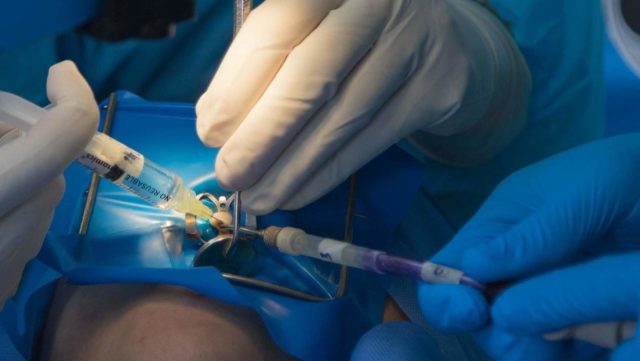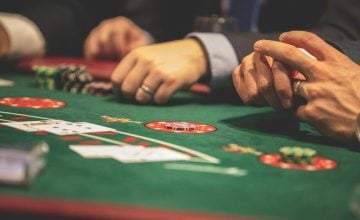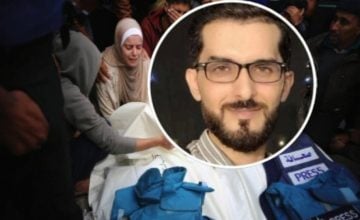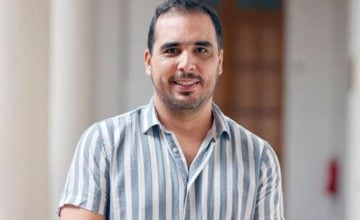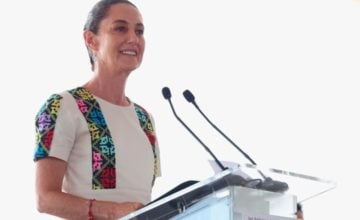For the first time in the history of the world, a «dead» and insensitive tooth can «return to life» through the implantation of stem cells inside the tooth. This process is carried out by Venezuelan scientists in the South American country.
Dr. José Cardier, head of the Cellular Therapy Unit of the Venezuelan Institute for Scientific Research (IVIC), the only one in the South American country and one of the few in Latin America, talks to RT about this unique experience where he has worked as a researcher and has been ‘patient’.
Cardier, professor at the Faculty of Medicine of the Central University of Venezuela (UCV) with more than 50 publications in international journals, explains the process on how to make a tooth with root canal treatment have sensitivity again.
So far, this cell regeneration process is in the experimental phase and is carried out in Venezuela for free. It is expected that when a certain number of patients is reached, it can become widespread in hospitals and dental clinics.
RT: Is this the first case in the world of dental regeneration from bone marrow stem cells?
J.C.: Yes, it is the first reported case in the world of dental pulp regeneration by implanting mesenchymal stromal cells in the teeth of patients.
It has such an impact that it was published in the Journal of Endodontics, one of the most important in the field of endodontics and dentistry, as a single case, -what is called a ‘case report’ in international journals. –, because of its impact in this field.
RT: How do you get stem cells from the bone marrow?
J.C.: The cells we use come from the bone marrow and are not from the patient, they are from healthy individuals who are not related to the patient. Those mesenchymal stromal cells are not rejected, so we can use them in other people. They are not only used in endodontics, but also for cases of periodontal disease and to regenerate skin in burned patients.
We obtain these cells by puncturing the hip bone, the upper part, which is called the iliac crest. We insert a needle and aspirate bone marrow, which is like blood, we take it to the IVIC cell therapy unit, which is the only one in Venezuela and one of the very few in Latin America.
The unit is twelve years old and is unique in doing so many types of regeneration procedures. It is dedicated to basic stem cell research and technological developments to apply them to patients who need to regenerate organs and tissue. In addition, this unit is a pioneer in Latin America in the regeneration of bone in fractures that do not heal, in the treatment of people with cartilage damage in the knee and with burns.
A stem cell implant was recently performed for corneal regeneration.
RT: What are the necessary conditions to carry out the process?
J.C.: We make cell cultures and the mesenchymal stromal cells multiply by millions. We keep them in tubes, frozen in liquid nitrogen, and every time we need them, we thaw them to use them in patients. That is the source, but those cells can be in other places like adipose tissue and skin. We have them everywhere in our body.
RT: Could you explain the process step by step??’
J.C.: Once we plan to attend to patients who have undergone root canal treatment, they are evaluated in the IVIC dental service, which has microscopes adapted for the specialty of endodontics.
A group of specialists, under the direction of the endodontist, reopens the tooth, cleans it, disinfects it, places the cells and closes the canal. After this, it is allowed to begin to evolve. X-rays and tests are then done with cold, heat, electricity points and taps on the tooth.
For these types of procedures, human resources are essential and are made up of people with a very high level of training, experience and knowledge in the area of stem cells and tissue regeneration. We have all this in the IVIC cell therapy unit.
You should also have specialists in endodontics, periodontics and other areas. It is a multidisciplinary work of those who carry out basic research and developments to bring them to the patient.
To carry out this type of procedure, all the resources such as equipment, materials and reagents must be available.
RT: What does it mean that after the process patients have ‘living teeth’?
J.C.: When doing a root canal treatment, the dental pulp is removed. There are the nerves, the nutrition of the cells, the blood vessels. That pulp is only formed in the embryo and, when it is removed, there is no chance of it regenerating, so we lose sensitivity.
When someone has a root canal done, it is popularly said that they «pulled out the nerve.» The tooth remains like a honeycomb, totally empty and, although it serves as a support, it is dead.
The fundamental thing is that the tooth recovers sensitivity so that it is ‘alive’ and thus a crown can be implanted that is not on a ‘dead tooth’.
I am one of those patients who had a root canal treatment: I felt nothing, my tooth was dead with a crown. Mesenchymal stromal cells were placed in the canal and the pulp was regenerated. Today I have a living tooth, with sensitivity.
RT: Is it possible to massify it in the short or medium term?
J.C.: Yes. These are experimental procedures for which the patient pays nothing. All costs are financed by the State, through the Ministry of Science and Technology, which provides everything necessary to carry out research and development.
Once we complete a number of cases, we will request authorization so that these cells, which act as medicine, have the sanitary registration of the Ministry of Health. With that, we can proceed to send them to the dental clinics.
In the IVIC dental service we treat ten to twelve patients in one morning and in one afternoon we have seen more than 20 cases in the periodontal and pulp regeneration areas. In other words, it can be extended to public and private hospitals and dental clinics.
The great commitment of the State, the Ministry of Science and Technology, the current minister, Gabriela Jiménez, and the IVIC authorities allows Venezuela to be at the forefront in Latin America and the world in organ and tissue regeneration.
